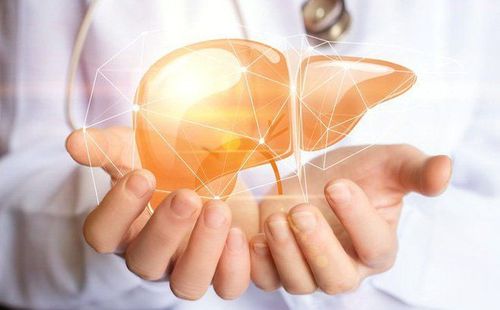This is an automatically translated article.
The article is professionally consulted by Specialist Doctor I Dong Xuan Ha - Department of Medical Examination and Internal Medicine - Vinmec Ha Long International General Hospital.
Congenital biliary atresia is a rather rare disease of the liver and bile, appearing due to many causes such as bacterial infection, virus, environmental factors or abnormalities in pregnancy,... to cirrhosis, endangering the health, even the life of the patient.
1. What is biliary atresia?
Congenital biliary atresia (English name is biliary atresia) is a rare disease of the liver and biliary tract. The incidence is about 1 in 10,000 newborns. The disease is characterized by unexplained inflammation, destruction of the bile ducts inside and outside the liver, impeding the outflow of bile, leading to fibrosis, biliary obstruction and progression to cirrhosis. Children with biliary atresia are at risk of dying before 1 year of age if the disease is not detected and treated promptly.
2. Classification of biliary atresia in children
There are many ways to classify congenital biliary atresia. Specifically:According to pathological changes of the extrahepatic biliary tract: Type I: Atrophy of the common bile duct (accounting for 10% of cases); Type II: Common hepatic duct atrophy (accounting for 2% of cases); Type III: Atrophy of the bile duct in the hilar region (88% of cases). It is also the type with the worst prognosis. According to lesions on the biliary tract: the common bile duct remains, only atrophy at the end when emptying into the duodenum; Complete atrophy of the common bile duct; Common bile duct property. According to lesions on the liver hilum: The hepatic ducts are dilated; Hypoplasia of the hepatic ducts; Deformity of bile pool formation in the liver hilum; Fibrosis of the hepatic ducts; Entire extrahepatic biliary tract fibrosis into plaques; Real estate of the hepatic ducts.
3. Pathogenesis
Biliary atresia was identified as a consequence of the ductal development of the biliary tract during the embryogenesis stage. Accordingly, the biliary system was formed from the hepatic diverticulum of the anterior intestine at the 4th week of embryonic life, and then differentiated into the head and tail. The gallbladder, cystic duct, and common bile duct are formed from the head. The tail makes up the intrahepatic and extrahepatic bile ducts. If the process of bile duct development during embryogenesis gives rise to abnormal factors, it can cause congenital biliary atresia in children.4. Causes of congenital biliary atresia
The cause of biliary atresia in children is still unclear. Scientists have suggested a number of factors that increase the risk of disease such as:Consequences of poisoning, bacterial and viral infections; Abnormalities in pregnancy; Environmental factors; Abnormalities of bile metabolism; The existence of an abnormal common biliary-pancreatic canal; The incidence is higher among children in Asian countries; Girls have a higher incidence of the disease than boys.
5. Symptoms of biliary atresia in children
Children with biliary atresia are usually full-term neonates, with symptoms appearing between the 1st and 6th weeks postpartum. Symptoms in children include:Jaundice lasting more than 2 weeks: 15% of newborns have persistent jaundice, mostly due to benign indirect hyperbilirubinemia. Jaundice in cases of biliary atrophy is not specific and is only an initial warning for parents and doctors to pay attention to screening;

Therefore, if the child shows signs of congenital biliary atresia, typically signs of jaundice for more than 2 weeks, parents should take the child to a major hospital for an accurate examination and diagnosis. Early diagnosis and surgery are critical to the success of treatment.
With 14 years of experience in the field of Endoscopy - Gastroenterology, Doctor Dong Xuan Ha proficiently performs diagnostic gastrointestinal endoscopy techniques, emergency interventions and therapeutic interventions.
Please dial HOTLINE for more information or register for an appointment HERE. Download MyVinmec app to make appointments faster and to manage your bookings easily.














